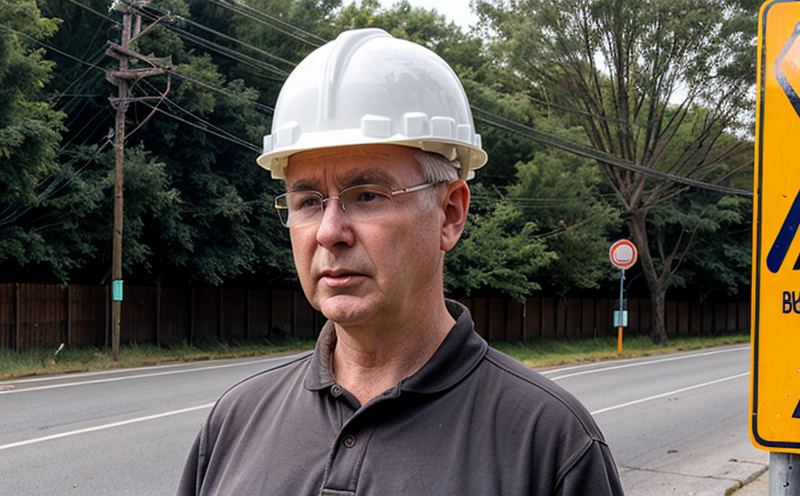WHO Environmental Noise Guidelines for Community Health Testing
The World Health Organization (WHO) has released guidelines to address environmental noise pollution and its impact on community health. These guidelines are designed to inform policy-makers, planners, and practitioners about the thresholds of noise levels that pose a risk to human health and well-being in urban environments.
The WHO Environmental Noise Guidelines for Community Health Testing provide a framework for assessing the effects of noise pollution on public health. This service involves comprehensive testing to evaluate exposure levels and their potential impact on communities. The guidelines are based on extensive research and expert consultation, ensuring that they reflect the latest scientific understanding of how noise affects human health.
The primary goal of this test is to ensure compliance with the WHO's recommendations for noise levels in urban areas. By adhering to these guidelines, organizations can help mitigate the risks associated with excessive noise pollution, thereby promoting healthier living environments and reducing the burden on healthcare systems.
Our team uses state-of-the-art equipment and methodologies to conduct this test. We follow international standards such as ISO 1996-2 for noise measurement and EN 3745:2018 for community noise assessment. This ensures that our results are accurate, reliable, and internationally recognized.
Our testing process involves several key steps. First, we deploy noise monitoring equipment at strategic locations within the target area. These devices capture data on sound pressure levels over a specified period, typically 24 hours or longer. Once collected, this raw data is analyzed to determine compliance with the WHO guidelines.
- Data Analysis: We use advanced software tools to process and analyze the noise data. This includes calculating statistical measures such as the equivalent continuous sound level (Leq) and peak sound pressure levels (Lpeak).
- Reporting: The results of our testing are compiled into a comprehensive report, which details the noise exposure levels and their compliance with WHO guidelines.
The findings from this test can have significant implications for urban planning and policy-making. By identifying areas where noise levels exceed safe thresholds, we help decision-makers take proactive steps to reduce noise pollution. This may involve implementing quieter technologies, redesigning infrastructure, or enforcing stricter regulations on noise-emitting activities.
Our service not only assists in meeting regulatory requirements but also contributes to improving the quality of life for residents in urban environments. By providing accurate and reliable data, we enable stakeholders to make informed decisions that prioritize public health and well-being.
Why It Matters
Exposure to high levels of environmental noise can have serious consequences for human health. The WHO guidelines emphasize the importance of reducing noise pollution in urban areas to protect against these risks. Some of the key health impacts associated with prolonged exposure to excessive noise include:
- Hearing Loss: Prolonged exposure to loud sounds can damage the delicate structures within the ear, leading to hearing loss.
- Sleep Disturbance: Noise can disrupt sleep patterns, resulting in poor-quality rest and reduced recovery.
- Mental Health Issues: Chronic stress from persistent noise exposure has been linked to increased rates of anxiety and depression.
- Poor Cognitive Functioning: Children exposed to high levels of environmental noise may experience difficulties with learning and concentration.
By adhering to the WHO guidelines, we can help mitigate these risks and create healthier living environments. This service is crucial for ensuring that urban areas meet internationally recognized standards for a safe and healthy environment.
Why Choose This Test
Selecting this test ensures that you are taking proactive steps to protect community health from the adverse effects of environmental noise pollution. Here are several reasons why choosing our service is beneficial:
- Compliance with International Standards: We adhere strictly to WHO guidelines and international standards, ensuring accuracy and reliability in our results.
- Expertise and Experience: Our team consists of experienced professionals who stay updated on the latest research and best practices in environmental noise testing.
- Data-Driven Insights: By providing detailed reports that include statistical analysis, we offer actionable insights to guide decision-making.
- Customized Solutions: We tailor our services to meet your specific needs, whether you require a one-time assessment or ongoing monitoring.
In addition to regulatory compliance, choosing this test allows you to contribute positively to public health and well-being. By identifying noise hotspots in urban areas, we help promote healthier living environments that support better quality of life for all residents.





